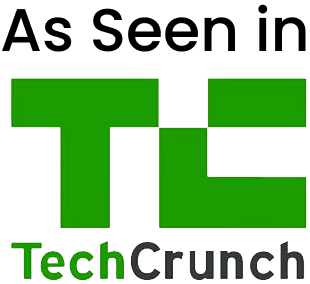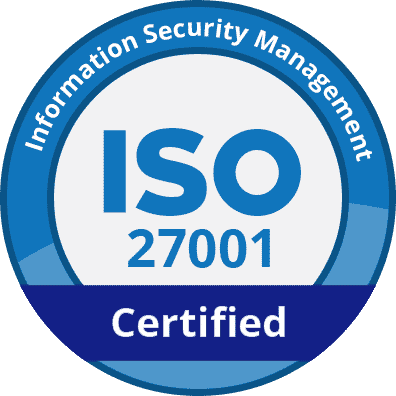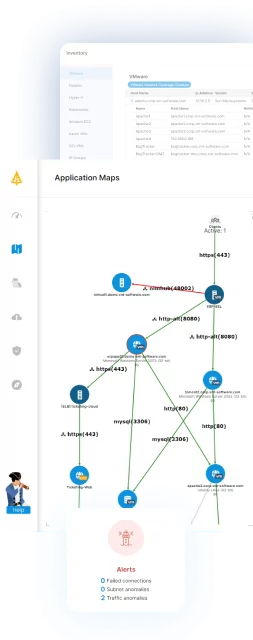What Is Hybrid Cloud Management?
Hybrid cloud management involves overseeing resources and services across both private and public cloud environments. It integrates the flexibility of public clouds with the security of private clouds.
Organizations leverage this model to balance workload efficiency, cost, and security. It presents a unified approach to managing resources, enabling data transfer and connectivity between different cloud models.
Hybrid cloud management requires tools and strategies to govern diverse environments. It includes optimizing workload placement and ensuring consistent security measures. The goal is to improve operational agility while reducing complexity. By integrating cloud platforms, organizations can maximize resource usage and maintain scalability.
This is part of a series of articles about application dependency mapping
Table of Contents
ToggleBenefits of Hybrid Cloud Management
Hybrid cloud management offers advantages that help organizations achieve a balance between cost, performance, and security:
- Improved scalability: Hybrid cloud environments allow organizations to scale resources up or down based on demand, leveraging public cloud capacity during peak times while keeping critical workloads on private clouds.
- Cost optimization: By using the public cloud for less-sensitive workloads and reserving private clouds for critical operations, organizations can reduce infrastructure costs and avoid over-provisioning.
- Enhanced security and compliance: Sensitive data can remain within private cloud environments, helping organizations meet regulatory and compliance requirements while still benefiting from public cloud services.
- Increased flexibility: Hybrid cloud management enables organizations to choose the most suitable environment for each workload, improving performance and ensuring workloads run efficiently.
- Business continuity: By spreading workloads across private and public clouds, organizations can ensure redundancy, disaster recovery, and minimal downtime in the event of outages.
- Simplified IT management: Centralized hybrid cloud management tools provide a unified view of resources, enabling better tracking, governance, and automation of operations across multiple environments.
Key Components of Hybrid Cloud Management
A hybrid cloud management strategy should incorporate the following components.
Infrastructure Management
Infrastructure management in a hybrid cloud setting involves overseeing the technological foundation that supports both cloud and on-premises systems. It requires integrating various IT environments to ensure smooth operations and resource utilization. Effective infrastructure management can improve system performance by ensuring that resources are properly allocated and managed across platforms.
Organizations need tools to automate tasks and track infrastructure health, reducing manual intervention. This involves tracking resource usage, optimizing workload distribution, and ensuring efficient system operations.
Learn more in our detailed guide to hybrid cloud infrastructure
Data Integration
Data integration ensures that data within and across cloud environments remains consistent and accessible. Integrating data from multiple sources is essential to maintaining data integrity and leveraging insights for decision-making. This process involves the transfer of data, requiring strategies and tools to handle diverse data formats and structures.
Challenges in data integration include ensuring data consistency, addressing latency issues, and managing data synchronization across different platforms. Overcoming these challenges requires data management strategies and the use of integration platforms.
Security and Compliance
Organizations must implement security measures to protect sensitive information in different environments and ensure compliance with regulatory standards. This involves deploying encryption, access controls, and tracking systems to protect data integrity and privacy.
Meeting compliance requirements can be challenging due to varying regulations across regions and industries. Hybrid cloud management requires organizations to remain vigilant, understanding compliance mandates across all environments.
Tracking and Performance Optimization
Tracking and performance optimization help ensure that hybrid cloud environments operate efficiently. Real-time tracking platfotms provide insights into system performance, allowing IT teams to identify bottlenecks and optimize resource usage. This is critical for maintaining desired service levels, ensuring that applications perform optimally under varying workloads.
Performance optimization involves tuning systems and processes to improve efficiency and response times. It requires analyzing performance metrics and implementing changes to improve system resilience.
Cost Management and Optimization
Cost management in hybrid cloud environments is an ongoing task, focusing on optimizing resource allocation and minimizing expenses. Organizations must strategically manage resource consumption to prevent overspending while ensuring operational needs are met. This may involve using analytics to understand usage patterns and deploy resources efficiently.
Optimization strategies include leveraging auto-scaling features and selecting cost-effective resources based on workload demands. Implementing these tactics requires understanding pricing models of various providers and identifying opportunities for cost savings.

Lanir specializes in founding new tech companies for Enterprise Software: Assemble and nurture a great team, Early stage funding to growth late stage, One design partner to hundreds of enterprise customers, MVP to Enterprise grade product, Low level kernel engineering to AI/ML and BigData, One advisory board to a long list of shareholders and board members of the worlds largest VCs
Tips from the Expert
Tips from the expert:
In my experience, here are tips that can help you better manage hybrid cloud environments effectively:
- Adopt a cloud governance framework: Establish a hybrid cloud governance model that aligns with business goals, covering resource ownership, cost accountability, and lifecycle management to avoid sprawl and resource wastage.
- Leverage AI for dynamic workload placement: Integrate AI and machine learning tools to analyze workloads and predict resource needs. AI-based tools can optimize real-time workload placement across public and private clouds for performance and cost savings.
- Implement unified identity and access management (IAM): Use a centralized IAM solution that spans hybrid environments to ensure consistent access control, minimize identity silos, and improve compliance.
- Standardize automation across environments: Use tools like Infrastructure as Code (IaC) to standardize automation workflows across hybrid cloud environments. This avoids inconsistent processes and ensures deployment efficiency.
- Prioritize latency-sensitive workloads: Place workloads that require low-latency processing closer to the edge or private cloud environments to improve performance. Use network optimization tools to streamline data transfer between clouds.
Challenges in Hybrid Cloud Management
There are several challenges that arise in hybrid cloud environments, making management more complex.
Complexity of Integration
Private and public clouds often operate using different architectures, tools, and APIs, which can make achieving communication and interoperability difficult. Organizations need to ensure that applications, data, and workloads can move smoothly between environments without compromising performance or security.
The presence of legacy systems further complicates integration, as these older systems may not easily align with modern cloud platforms. Additionally, setting up secure and efficient network connections between environments requires careful planning and significant investments in compatible technologies.
Visibility and Monitoring
Gaining end-to-end visibility across hybrid cloud environments can be a challenge due to the distributed and complex nature of resources. Each cloud platform may come with its own set of monitoring tools and dashboards, creating a fragmented view of the infrastructure.
Without centralized visibility, IT teams struggle to track resource utilization, performance metrics, and security issues in real time. This lack of oversight can lead to inefficiencies, such as underutilized resources, unnoticed performance bottlenecks, and misconfigurations that may expose the system to security risks.
Skill Gaps
Effectively managing hybrid cloud environments requires a team with specialized knowledge and expertise. IT professionals must understand the intricacies of private and public cloud platforms, including how to integrate, secure, and optimize workloads across these environments. There is often a significant shortage of talent with the required hybrid cloud skills.
Existing IT teams may lack experience in handling the complexities of multi-cloud architectures, workload migration, and hybrid security protocols. Bridging this skill gap typically involves upskilling current employees through training programs or certifications, hiring experienced professionals, or relying on third-party managed service providers, introducing extra costs and longer implementation timelines.
Best Practices for Hybrid Cloud Management
Organizations can ensure efficient management of their hybrid cloud deployments by implementing the following best practices.
1. Define Clear Policies and Roles
Defining clear policies and roles involves establishing guidelines for cloud usage, data security, and compliance. Roles must be clearly defined to ensure accountability and simplify operations. Effective policies provide a framework for decision-making and establish expectations for cloud resource management.
Having distinct policies helps mitigate risks associated with security breaches and non-compliance. Roles should align with organizational goals, ensuring that personnel know their responsibilities and have the necessary training.
2. Implement Stringent Security Measures
Security measures are crucial for protecting data integrity and privacy in hybrid cloud environments. Implementing multi-layered security strategies, incorporating encryption, and access controls are essential aspects. Regular security audits and threat monitoring help in identifying vulnerabilities and mitigating potential breaches.
Organizations must ensure security measures keep pace with evolving threats and complexities of hybrid environments. This requires ongoing assessments and adaptations to maintain a strong security posture.
3. Optimize Workload Placement
Optimizing workload placement involves selecting the most suitable cloud environment for each application or service. This best practice ensures that workloads are aligned with available resources, performance requirements, and cost considerations. Effective workload management leads to improved performance, minimized costs, and maximized resource utilization.
This involves continuous analysis of workload demands and cloud capabilities. Organizations should adopt flexible strategies for workload placement to respond dynamically to changing conditions.
4. Monitor and Optimize Performance
Continuous monitoring and performance optimization are essential for ensuring IT systems function at their best. Effective monitoring provides insights into how applications and services perform, identifying areas for improvement. Optimization involves adjusting configurations, resources, and processes to improve performance and ensure service reliability.
Proactively addressing performance issues helps maintain desired service levels and user satisfaction. Tools that provide real-time metrics and analytics enable teams to make data-driven decisions.
5. Perform Dependency Mapping
Performing dependency mapping involves identifying and visualizing relationships between applications, services, and infrastructure components within a hybrid cloud environment. This practice ensures a clear understanding of how workloads interact across private and public clouds, enabling organizations to manage complexity and reduce the risk of disruptions.
Dependency mapping helps pinpoint interdependencies impacting performance, availability, or security during workload migrations or updates. Tools that automate dependency discovery and visualization provide real-time insights into system architecture, highlighting potential bottlenecks and vulnerabilities.
Mastering Hybrid Cloud Management with Faddom
Faddom understands the challenges of managing cloud environments, which become even more complex with hybrid architectures. Maintaining visibility across both on-premises and cloud infrastructure is essential for optimizing performance and ensuring security. That’s why Faddom offers real-time visualization of your entire IT ecosystem with continuous, automatic updates. In just 60 minutes, you gain a clear view of all your servers, applications, and interdependencies—empowering you to manage resources efficiently and proactively address potential risks.
Schedule a call with our expert team to learn how Faddom can help you take control of your topology!









